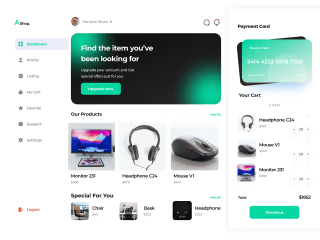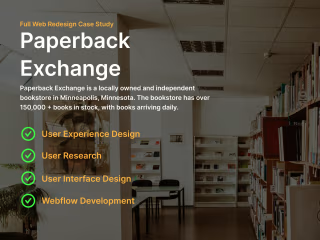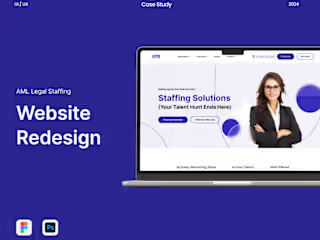Creating A Beautiful High Converting Restaurant Landing Page

Anjola Omole
Web Designer
Product Designer
Web Developer
Adobe Illustrator
Figma
Webflow
DeliciousDoor

Full Landing Page
Project Background
In the competitive world of dining, restaurants need a strong online presence to attract customers. A well-designed landing page not only showcases the restaurant’s ambiance, menu, and brand story but also drives online reservations, takeout orders, and other conversions. This project focuses on creating a visually appealing, functional, and conversion-optimized landing page that helps restaurants engage potential customers effectively and encourages them to take action.
Project Goals
Design a visually captivating landing page that reflects the restaurant’s brand identity and appeals to its target audience.
Maximize conversion opportunities by incorporating clear calls-to-action for reservations, menu exploration, takeout orders, and more.
Optimize user experience (UX) to ensure visitors can find essential information quickly and easily.
Increase brand trust and loyalty by showcasing authentic and high-quality visuals, customer testimonials, and key features like chef’s specials or unique restaurant services.
Enhance SEO and performance to drive organic traffic and reduce bounce rates.
Key Performance Metrics
Conversion Rate: Track how many visitors complete desired actions (e.g., booking a table, ordering online).
Bounce Rate: Measure the percentage of users who leave without interacting; a lower bounce rate indicates a more engaging page.
Average Session Duration: Evaluate how much time users spend on the landing page to gauge interest.
Scroll Depth: Determine how far users scroll on the page to understand engagement with different content sections.
Page Load Speed: Ensure a fast-loading page (preferably under 3 seconds) to reduce user drop-off rates.
Target Audience
Primary: Local customers seeking dining options, whether for casual meals, special occasions, or group gatherings.
Secondary: Out-of-town visitors or tourists researching dining options in the area.
Audience Profile: Individuals aged 21-55, tech-savvy and social-media-influenced, likely to make decisions based on online reviews, visuals, and ease of online booking.
Device Choice Options
The landing page should be fully responsive across:
Mobile devices (priority due to high mobile usage)
Tablets
Desktop computers
Suggested Tasks
Visual Design & Branding: Develop a unique design that reflects the restaurant's brand identity, including color schemes, typography, and layout.
Navigation & Layout Optimization: Create a clean, intuitive layout where essential actions (reservations, menu access, online ordering) are prominent and easily accessible.
Content Creation:
Hero Section: Feature high-quality images or videos of the restaurant, dishes, and ambiance.
About Section: Briefly introduce the restaurant’s story, chefs, and values to build a connection with the audience.
Menu Section: Display the signature dishes, seasonal specials, or popular items, possibly linking to the full menu or an ordering platform.
Testimonial Section: Showcase customer reviews or media quotes to build credibility.
Call-to-Action Section: Incorporate clear CTAs for booking a table, exploring the menu, or ordering online.
SEO & Content Optimization: Implement on-page SEO elements (meta tags, headers, alt text for images) to improve search engine visibility.
Performance Optimization: Optimize images, code, and scripts to ensure fast load times across all devices.
User Testing: Conduct usability testing to validate the ease of navigation, attractiveness of design, and effectiveness of calls-to-action.
Guiding Questions
Brand Representation: Does the design accurately reflect the restaurant’s style and atmosphere?
User Engagement: Are there interactive elements (like parallax scrolling or subtle animations) that keep users engaged without overwhelming them?
CTA Placement: Are calls-to-action placed strategically to guide users toward conversion without interrupting their experience?
Mobile Friendliness: Is the design fully responsive and user-friendly on smaller screens, given that many users will likely access it via mobile?
Visual Storytelling: Do the images and videos authentically capture the restaurant’s offerings and ambiance, enticing users to visit or order?
What This Challenge is Designed to Teach and Improve On
Responsive, User-Centric Design: Understanding how to create designs that are visually appealing yet easy to navigate on all devices.
Conversion Optimization Techniques: Learning how to strategically place calls-to-action, build trust, and guide users through the funnel to maximize conversion rates.
Performance and SEO Fundamentals: Gaining insight into best practices for optimizing page speed, search engine visibility, and content relevance.
Visual Storytelling and Brand Building: Developing skills to visually represent a brand's story and unique qualities in a way that resonates with users.
User Testing and Iteration: Practicing how to gather feedback from user testing and make data-driven improvements to the design and content.






